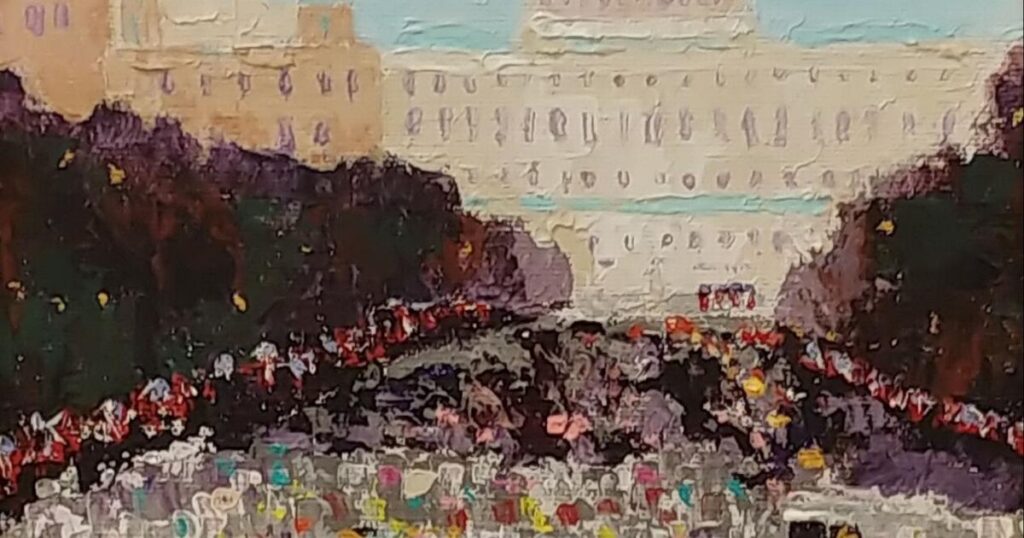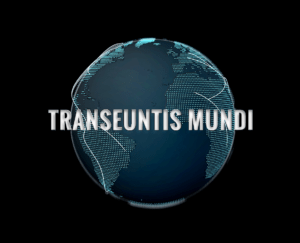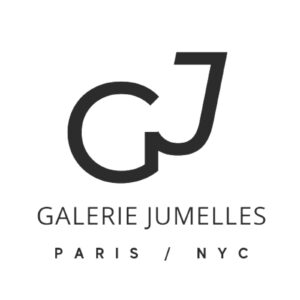Voices Made Visual is the name of the latest exhibition at the Aiken Center for the Arts. Opening just last week and running until July 28, the show focuses on the “majesty and plurality of voices, past and present, that have shaped, and continue to shape, our national dialogue.”
How was this particular topic chosen? The answer is simple. The exhibition is designed to supplement on a local level the Smithsonian traveling exhibit “Voices and Votes: Democracy in America” opening at the Aiken County Historical Museum on July 23.
Themed exhibitions can be hit or miss. One never knows what kind of harvest will result from an open call for entries for any juried show, even one such as this, which is offering over a $1,000 in prize money. However, Caroline Gwinn, the center’s executive director, was pleased by the area response in both quantity and quality. Indeed, over 40 submissions were received by the deadline.
Let’s examine some of the standout pieces, which can be roughly divided into two categories: those that focus on the spirit of America by offering individual responses to some of our country’s enduring symbols and those that highlight the evolving nature of our grand democratic experiment.
In the first category, eagles appear in abundance. Ever since the bald eagle appeared on the Great Seal in 1782, this fabled bird has represented in the popular imagination “the land of the free and the home of the brave.” The title of Marie Thomasson’s impressive stitched-felt eagle makes reference to the bird’s multiform usage: “Always a Symbol of …”
Whereas Thomasson’s fabric sculpture depicting a perched bird reminds Americans of the need to remain ever vigilant of the dangers, both external and internal, to our democracy, Josef Vincent Hathaway’s acrylic rendering titled “Eagle’s Cry” focuses on the sheer exuberance experienced by those who are truly free. His bird flies straight at the viewer, a flag clutched in its talons. The fact that this central figure is framed by the moon reminds us of America’s grandest achievement in space, the moon landing, and how high we can reach when we set our collective sights on any seemingly impossible goal.
Flags are also omnipresent in the current show. Noble Diller’s “O Say Can You See” makes visual reference to the flag that inspired the composition of Francis Scott Key’s patriotic poem in 1814. Composed of 100 canvas squares, the 15-starred flag image is framed in black and brown on the right to indicate the smoke of the overnight bombardment of Fort McHenry in Baltimore harbor and framed in yellow on the left to depict how the flag continued to wave, despite all odds, in the “dawn’s early light.”
Another national symbol – in this case, the Statue of Liberty – is given a voice by Karen Santos. Her mixed media depiction titled “Liberty Speaks” uses the iconic statue to comment on the universal cares and concerns of motherhood. Beneath the noble head of the female personification of liberty, the artist has draped images of multi-ethnic women and children; around the copper crown float the words “Mighty Mother” and fragments of the famous sonnet by Emma Lazarus.
In accordance with the “welcome” Lady Liberty offers to all those who seek sanctuary on these shores is a score of works in this exhibition that make reference to the struggles many of our citizens, especially members of minority communities, have faced to achieve the American dream.
Emily McBurness’s pop art “Your Voice, Your Vote, Women’s Rights” features a smiling African American female, her fingernails painted red, white and blue, casting a ballot. June Clement’s “Stand Up” depicts one of the large-scale demonstrations organized in our nation’s capital, like the 2017 Women’s March, the largest single-day protest in United States history.
Sometimes, as Patrick Krohn asserts in his black and white photograph, such mass rallies can seem like “Too Much Noise” – in this image two youngsters hold their hands to their ears as sign-carrying demonstrators clamor behind them – but there are times when the ballot offers an insufficient remedy to redress wrongs and all citizens have the right to take to the streets to make their voices heard.
As Keith Tolen, who served along with Lauren Virgo as one of the show’s two jurors, has pointed out in his statement to all those artists who participated in this exhibition: “the highest award is bringing your work to the dialogue which helps move forward the conversation in our country.” The artists in this show have made their voices visible. It’s the obligation of all the citizens of our democratic republic to study the issues and make their informed opinions known.
This content was originally published here.



